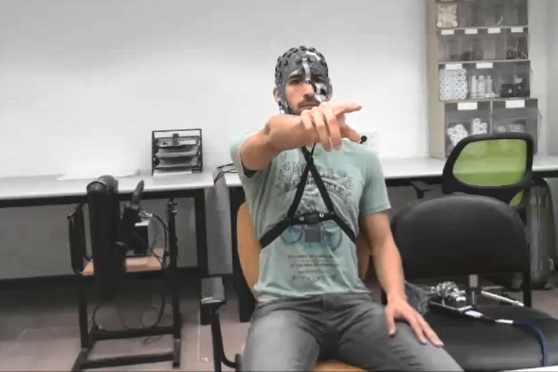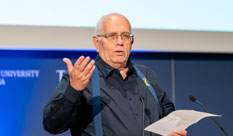More:
News & Stories
Groundbreaking study in HIT could change the lives of ALS patients
The first phase of a new, groundbreaking study in the Research Laboratory "Non Invasive Hybrid Machine Interface" at the Faculty of Electrical Engineering has recently been completed. The research was carried out by the head of the laboratory, Dr. Ronen Sosnik and the students Omer Ben Tzur and Inora Valizada, who completed their final project at the lab and graduated with honors.
The study presents a way to translate movement imagery into a real movement, so that in the future patients with nerve damage will be able to move an external device with their though and perform actions independently, in a manner similar to translating physical movements into movements in the virtual world in advanced computer games. The study was recently published in the journal ‘Neuroscience’, one of the leading scientific journals in the field.

Omer Ben Zur – performing the experiment in the lab
Dr. Sosnik adds, "We have made an innovative use of the Kinect sensor that is attached to Microsoft's Xbox console, which is also used by gamers, to identify arm joint locations (hand, elbow and shoulder). Using advanced signal processing methods, we analyzed the electrical signals from the brain (EEG), and explored how a movement ‘starts’ in the brain, and what nerve patterns are associated with each movement - even just by thinking about it.
The results of the study have significant implications for brain-machine interfaces and we believe and hope that in the future we will be able to help people with neurological impairments such as patients with muscular dystrophy (ALS) or stroke, to control thought-only devices, such as a robotic arm, and perform daily activities from preparing a cup of coffee to drawing and writing".
Published: 24.8.17
- News & Events
New Collaboration with Sheba Medical Center will qualify nurses to work in a digital environment.
Collaboration between HIT Holon Institute of Technology, the teaching authority of the Sheba Medical Center, and the Sheba-BEYOND virtual hospital will allow training nurses in Israel and around the world to work in a digital...



 Additional programs
Additional programs
